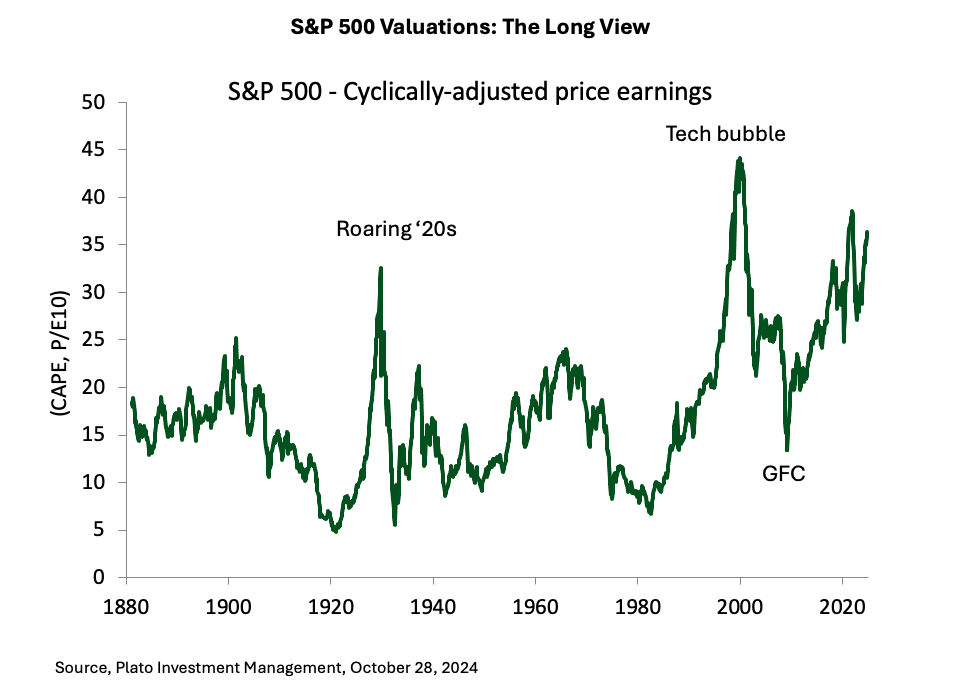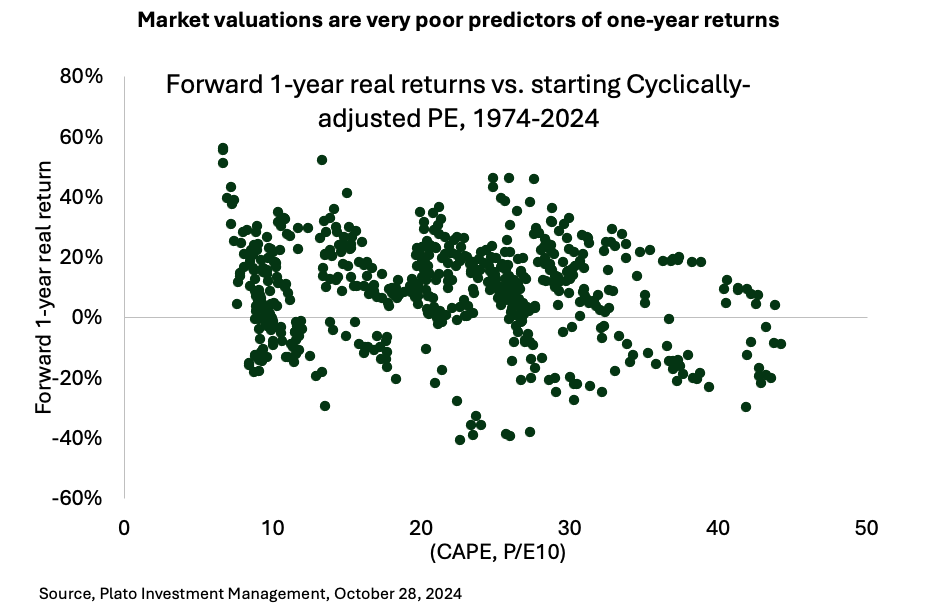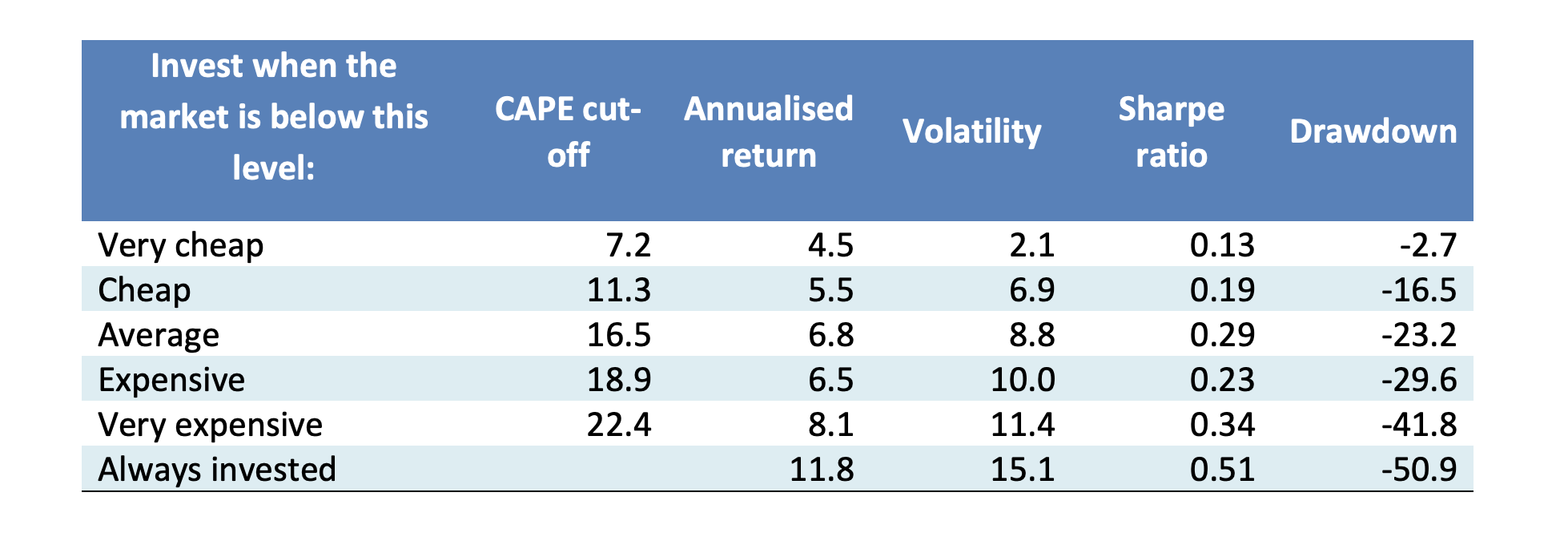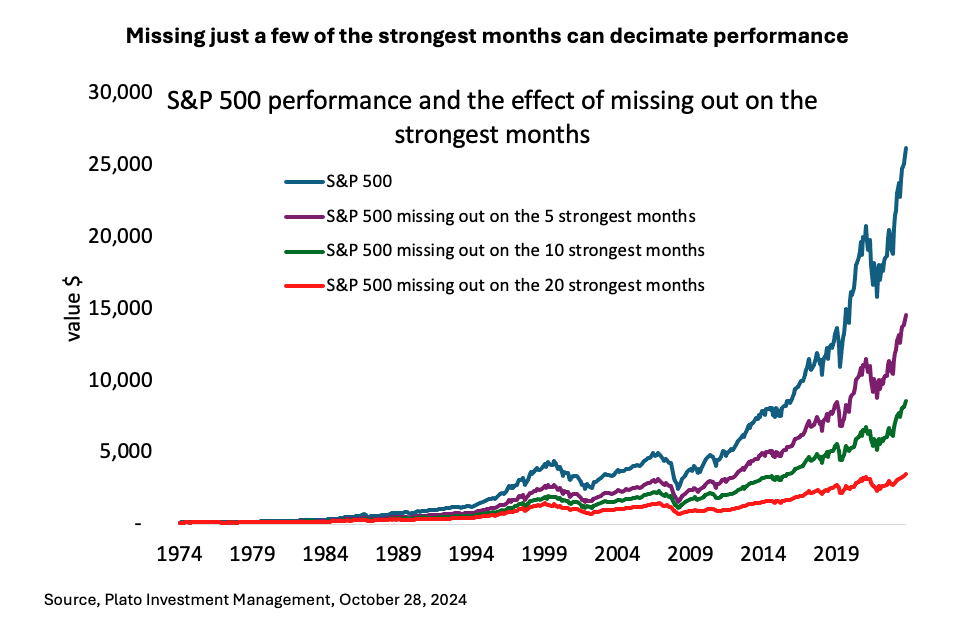What the perma-bears won’t tell you about 'extreme' stock market valuations
The market is undoubtedly in a state of exuberance. The S&P 500 has made 49 new highs this year alone. Three assassination attempts, a war without end on Europe’s eastern flank and an ever-escalating crisis in the Middle East have been met by the market with a shrug.
An astute way of analyzing equity markets valuations is by using a cyclically-adjusted price-to-earnings ratio, this is known as the CAPE Ratio. The CAPE was popularised by Yale’s Robert Shiller. It uses the average of the last ten years’ earnings adjusted by inflation to provide a more stable earnings estimate.
Since 1881, the S&P 500 CAPE has ranged between 4.78 in 1920, and 44.2 at the height of the tech bubble.
Currently (in late October), the S&P 500 is sporting a CAPE Ratio of 36, this puts the current market’s valuation among the top three percent of most expensive valuations since 1881.

With valuations this extreme, investors will naturally conclude a significant sell-off is imminent. Many will choose to take profits or go to cash.
But does this seemingly instinctive assumption hold up based on market data? The answer may surprise you.
The chart below plots CAPE Ratios on the X (bottom) axis against forward 1-year real returns on the Y (vertical) axis. You can see that the link between starting valuations and returns over the proceeding year is negligible – resembling a Rorschach test more than a reliable predictor. This is not to say a market collapse is impossible, just that the market valuation is not a useful predictor of one.

A CAPE trading strategy?
To determine the usefulness of valuations for market timing we examine a simple rolling trading strategy that rebalances each month based on the CAPE ratio at the beginning of each month.
Using nearly 100 years of market history we identify CAPE valuations that signal when the market is considered cheap or expensive, shown in the first column in the table below, labelled CAPE cut-off.
If the S&P 500 CAPE exceeds the cut-off at the beginning of the month, the strategy shifts to 100% cash. The cash moves back into the S&P 500 at any time in the future when the CAPE is below the cut off at the beginning of the month.
Otherwise, it remains fully invested in the S&P 500.
The table is based on this rolling investment strategy running from the end of 1974 to October 2024 (the time of writing this article).

Unsurprisingly, moving to cash every time the CAPE exceeds 7.2 and only re-entering the market when it's very cheap (as seen in the first row) leaves substantial returns on the table.
At the other end of the spectrum, however, you can see that shifting entirely to cash when the CAPE indicates the market is very expensive with a CAPE of over 22.4 (bottom row) also significantly erodes value.
Our hypothetical investor would have been far better off staying fully invested throughout (as demonstrated in the bottom row of the table). While the drawdowns would have been deeper, the stronger returns more than offset the short-term losses.
This counterintuitive outcome is largely explained by the shift in market dynamics post-1970, where deregulation and lower interest rates drove valuations higher.

Perils of market timing
The data is a way of reinforcing the well-documented dangers of trying to time the market.
Whether it’s through fear or misplaced belief in one’s trading ability, when capital is moved in and out of the market like in the case of the above trading strategy scenario, investors inevitably miss significant periods of market strength.
A substantial portion of market returns come from a small number of extreme months.
The chart below illustrates the devastating impact of missing out on just a few of the best months.

Over the past fifty years, missing the five best-performing months would have reduced terminal wealth by 45%. Missing out on the best 25 months would have resulted in a 85% reduction.
This starkly underscores the timeless adage: time in the market beats timing the market.
You will very rarely hear about the capital destruction ability of the perma-bear.
Learn more about Dr David Allen and the Plato Global Alpha Fund
Dr David Allen is Plato Investment Management's Head of Long/Short Strategies and Portfolio Manager of the Plato Global Alpha Fund.
The Plato Global Alpha Fund is a long/short global equities fund which aims to provide investors an all-weather solution that can generate alpha throughout the cycle. The 150/50 strategy helps amplify opportunities to generate returns from long ideas, while also generating alpha from companies expected to underperform.
Click here to go to the Plato website to learn more about the Fund and its performance.

Watch Dr David Allen at Livewire Live 20224
3 topics
1 fund mentioned

